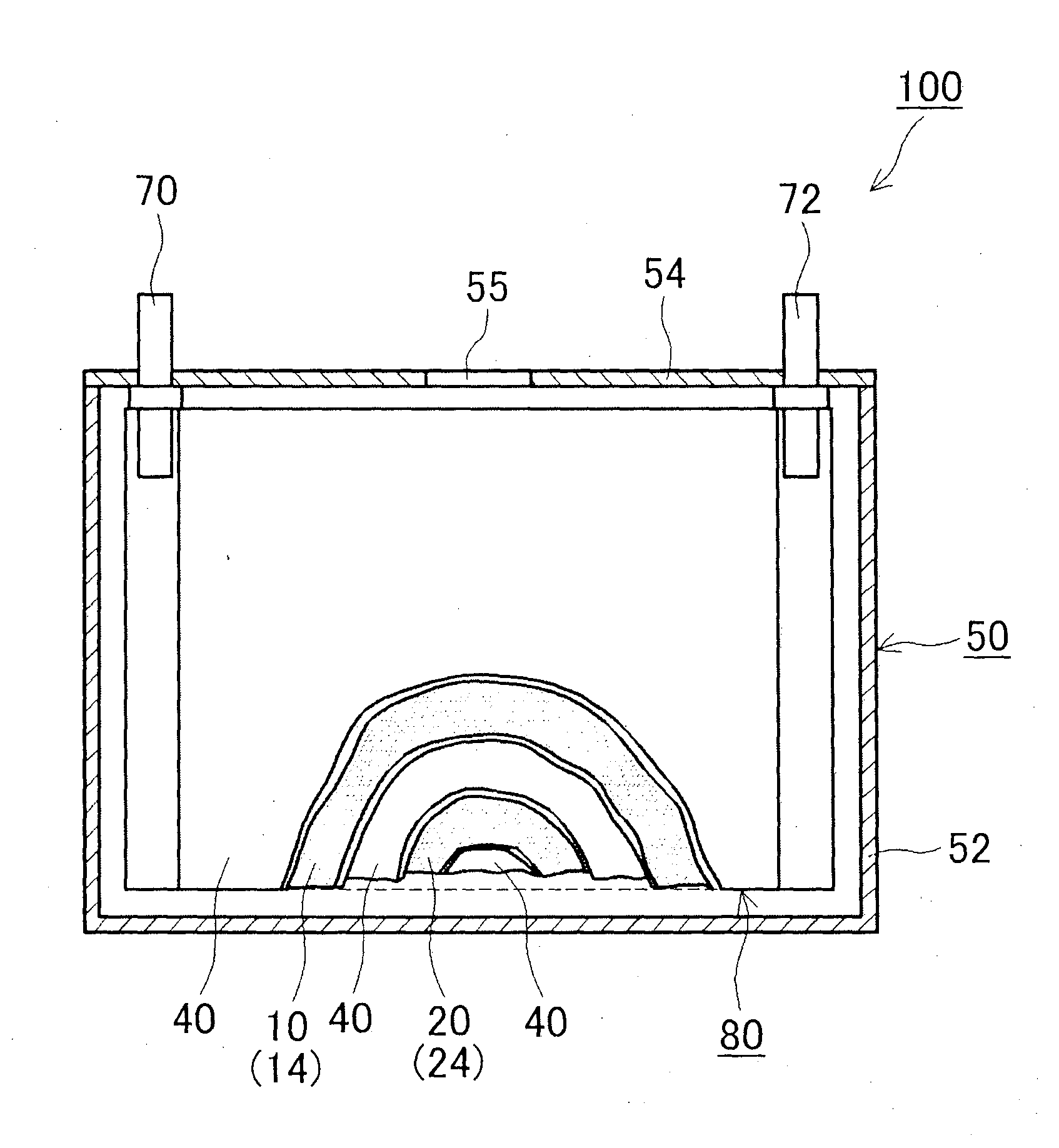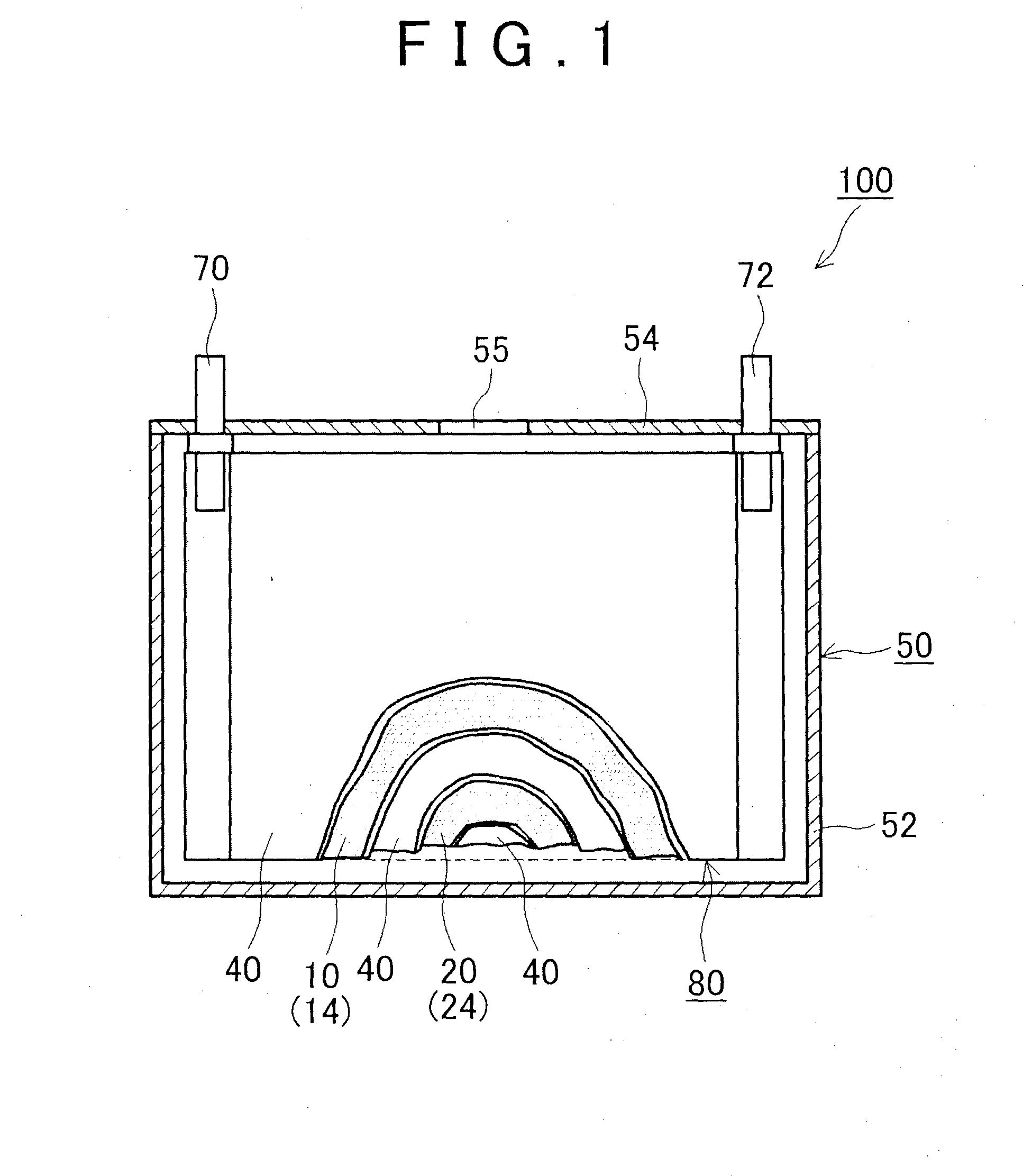Nonaqueous electrolyte secondary battery
a secondary battery and electrolyte technology, applied in the field of non-aqueous electrolyte secondary batteries, can solve the problems of increased internal resistance, low electron conductivity of lithium-ion conductive glass, and general low electron conductivity, and achieve excellent energy density, input/output density and endurance. the effect of high oxidation resistan
- Summary
- Abstract
- Description
- Claims
- Application Information
AI Technical Summary
Benefits of technology
Problems solved by technology
Method used
Image
Examples
Embodiment Construction
[0020]Hereinafter, a preferred embodiment of the present invention will be described. Items that are other than those that are particularly referred to in the present specification and that are necessary to perform the present invention (for example, a general manufacturing process of a battery that is not characterized by the present invention) can be grasped as a design matter of a person skilled in a conventional technology in the relevant field. The present invention can be performed based on contents disclosed in the present specification and technical commonsense in the relevant field.
[0021]The nonaqueous electrolyte secondary battery disclosed here includes a positive electrode, a negative electrode and a nonaqueous electrolyte. Hereinafter, each of the constituent elements will be sequentially described.
Positive Electrode
[0022]The positive electrode of the nonaqueous electrolyte secondary battery disclosed here includes a positive electrode active material and an inorganic p...
PUM
| Property | Measurement | Unit |
|---|---|---|
| particle size | aaaaa | aaaaa |
| diameter | aaaaa | aaaaa |
| particle size | aaaaa | aaaaa |
Abstract
Description
Claims
Application Information
 Login to View More
Login to View More - R&D
- Intellectual Property
- Life Sciences
- Materials
- Tech Scout
- Unparalleled Data Quality
- Higher Quality Content
- 60% Fewer Hallucinations
Browse by: Latest US Patents, China's latest patents, Technical Efficacy Thesaurus, Application Domain, Technology Topic, Popular Technical Reports.
© 2025 PatSnap. All rights reserved.Legal|Privacy policy|Modern Slavery Act Transparency Statement|Sitemap|About US| Contact US: help@patsnap.com



